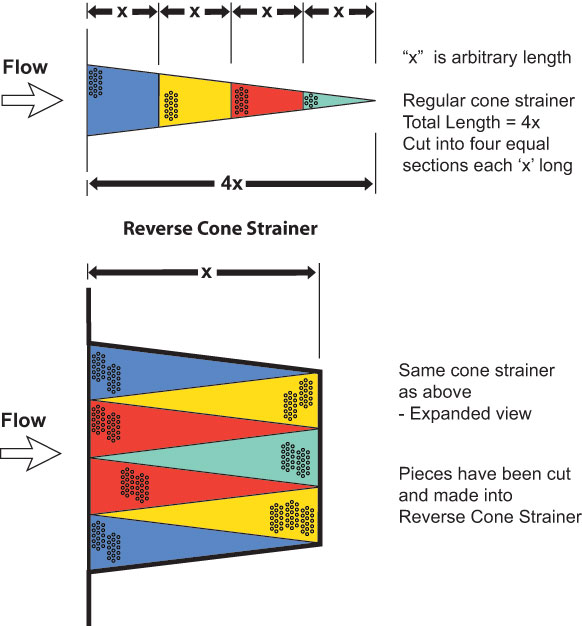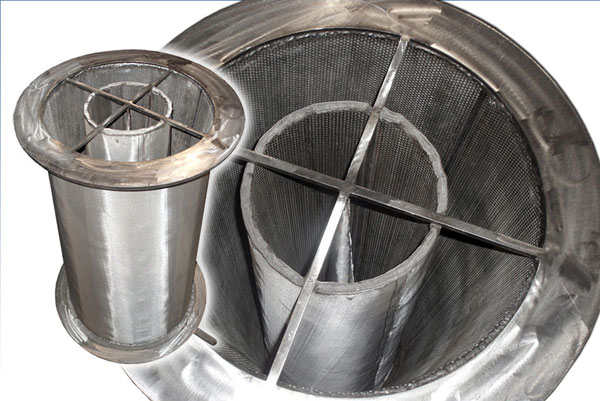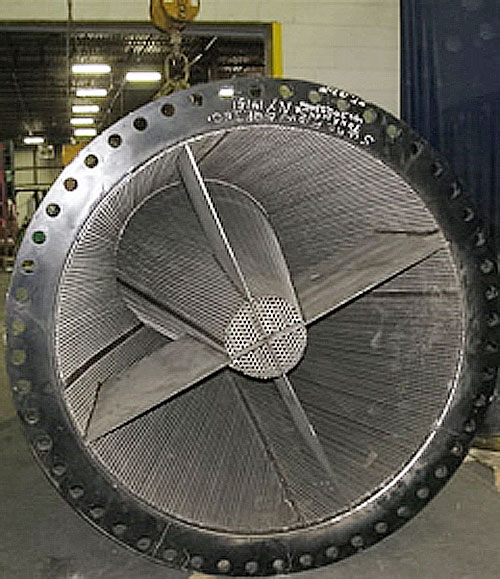Reverse Cone Strainer
A Reverse Cone Strainer is basically a cone strainer inside a cone strainer… inside another cone strainer. Essentially this gives you three times the coverage in terms of filtration.
The Sure Flow Reverse Cone Strainer accomplishes fine mesh filtration by compressing the effective flow area of a 20-foot-long cone strainer into a compact 5-foot strainer. There are very few industrial manufacturing situations where you have the luxury of room for a 20-foot-long strainer.
This product is one of those cases where a picture is worth a thousand words, so we’ll let a graphic do the work. This exceptional conceptualization of just how effective reverse cone strainers are at conserving space was sketched out by Justin LeBlanc our V.P. of Engineering.
The first images show a regular cone strainer, with a total length of “4x”, with “x” being an arbitrary length.

The second image shows an expanded view of the same strainer. It has taken the 4 cut pieces of the cone strainer from the first image and welded them together in one reverse cone strainer. It essentially is now the length of just one of the sections in a regular cone strainer.
With the “4” cone sections now condensed into the length of just one, these strainers are sometimes referred to as “Quad Reverse Cone Strainers.”
The unit is simple to clean, conserves space and with an open area of 300%, this strainer provides exceptional flow filtration design and functionality.
Applications
The most common use of reverse cone strainers is in a temporary or start-up application, such as when a new process line or pipeline is commissioned.
One assumption in seeing the capacity of a typical cone strainer that is 4 times as long as a reverse cone strainer would be that the reverse cone strainer geometry may cause increased pressure drop. In fact the two have identical surface area and have the same pressure drops.
The greater surface area can be half clogged and still have more surface area than the cross section of the pipeline, minimizing pressure drop.
A reverse cone strainer does not have increased surface area, compared to a regular cone strainer, it is just more compact in design. Therefore flow and pressure drop characteristics are the same.
As usual all the technical information for this description came from Sure Flow Equipment’s Engineering Department with its unique and comprehensive knowledge of reverse cone strainers which is always available for consultation to Sure Flow customers.
Here are some examples of reverse cone strainers which often help people visualize what’s involved with these unique products.



